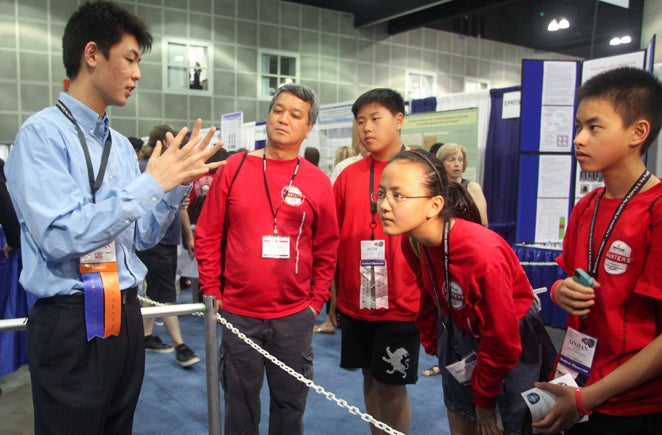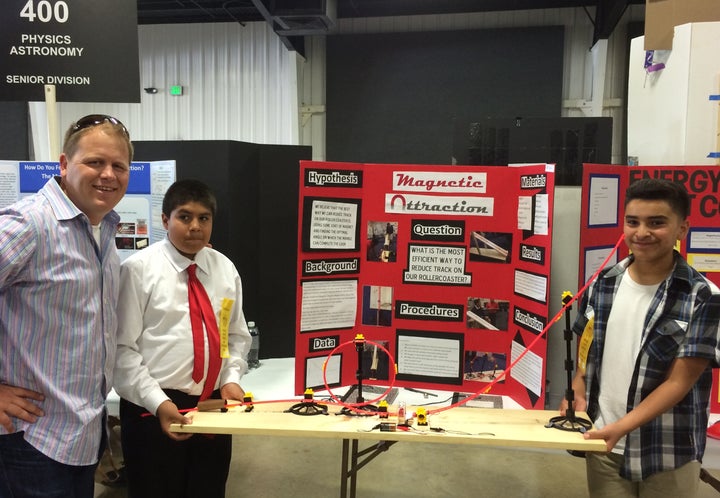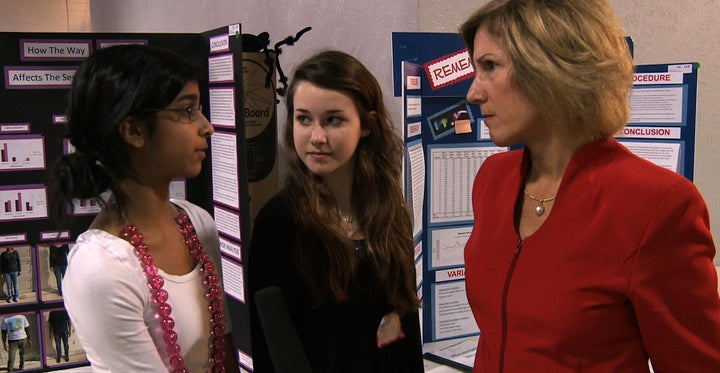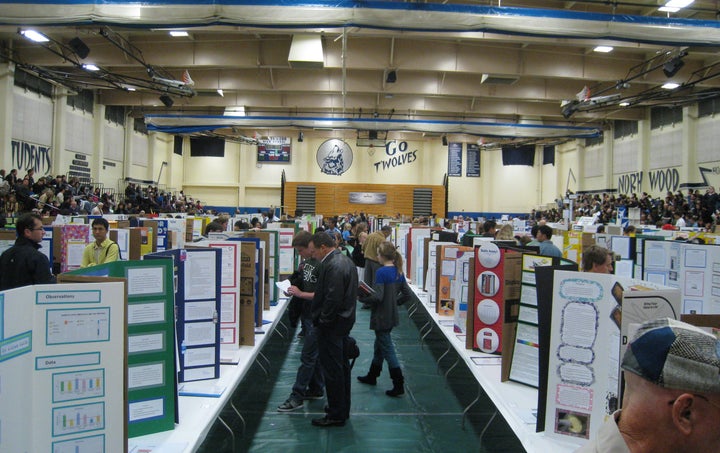Opportunity is knocking for the next champion of the world’s longest-running, largest, most prestigious and most inclusive high school STEM competition to step forward: International Science and Engineering Fair (ISEF) is up for grabs.
Deftly guided by the Society for Science and the Public for seventy years, science fair systems sponsored respectively by industry giants of their era – Westinghouse (from 1942 to 1997) and Intel (from 1998- the present) – are at the epicenter of virtually every state, national and international STEM education movement. Their renowned competitions, Science Talent Search, International Science and Engineering Fair and Broadcom MASTERS help drive our urgent imperative to educate disciplined, audacious STEM-literate adults at all levels of society who will fill millions upon millions of 21st century jobs that require flexible competencies in math, science and engineering.

Finalists from the Broadcom MASTERS middle school science and engineering competition have the opportunity to meet finalists from ISEF.
This is why Henry Samueli, Broadcom’s founder (whose passion for electrical engineering grew out of building a shortwave radio in 7th grade) and Scott McGregor (Broadcom’s former CEO who used the family basement to make model rockets as a kid) voted in 2010 for the Broadcom Foundation to help develop ISEF’s “farm team” by sponsoring the Society’s middle school competition, the Broadcom MASTERS.
Imbuing youth of every gender, ethnicity and economic background with 21st century skills through project-based learning is a well-documented outcome of the science fair experience. Supported by district schools and managed by community volunteers for three generations, our nation’s robust fair network uniquely hones critical thinking skills by tapping into a boy or girl’s personal passion – whether rocketry, radios, dance, tidepool sea-life or DNA. Only the science fair model provides a perfected template that makes project-based learning in STEM available to any student, whether in public school, private school or home schooled. It empowers a youngster to think for him or herself, to develop the necessary research tools to be an objective observer, reach conclusions based on quantifiable facts, develop discipline through repetitive experimentation and defend an argument in favor of personally held beliefs that result from his or her objective research. These methodologies become deeply “embedded into a way of being and can be tapped as young people switch fields,” writes Scott Duke Kominers, because research training is portable. Case in point: Boy-Rocketeer-turned-National Talent Search semifinalist Scott McGregor migrated from high school chemistry to computer science and psychology at Stanford.

Two students compete in the Orange County Science and Engineering Fair that worked on their project after school, a program supported by THINK Together and the Broadcom Foundation.
The science fair experience is simply different than other competitions. Although there are many wonderful tech-oriented competitions and maker programs that help generate a specific talent pipeline for employee-thirsty tech companies like Intel, they do not – cannot - reach all the young people we need for hundreds of thousands of STEM jobs in the U.S. or the millions needed around our interconnected globe.
Access to science projects is ubiquitous and can emanate from the student’s own interests in math, science or engineering or by accessing teacher and kid friendly websites like Science Buddies; projects can be developed at home, at school or in afterschool projects. Most importantly, the science fair experience can inspire the student to stick with STEM classes in high school and beyond. Vince Bertram, Ed.D., president and CEO of Project Lead the Way and author of One Nation Under Taught: Solving America's Science, Technology, Engineering & Math Crisis, writes “turn a kid off from math or science in an early grade and you can almost never make up for that. Turn a student on at an early age and the possibilities are endless.”

“Science fairs still do that in a way that all the textbook learning cannot,” says Mary Sue Coleman, biochemist and president of the Association of American Universities, and right now science fairs are taking place all over this country with numbers of participants sharply on the rise. The array of STEM disciplines, cross disciplines and new disciplines that are integrated into student competitors research projects are mind-boggling. Says co-president of Orange County Regional Science & Engineering Fair Prasanthi Sathyaprakash, “at this one fair alone, there are 600 participants being reviewed by over 160 judges in 20 distinct STEM categories.”
As Steve Lohr wrote for the New York Times, “(I)t is hard to imagine a time since the post-Sputnik years when science and technology education has been more valued, by universities and in the labor market. It is also hard to imagine that the leading international science fair, whose roster of participating countries and territories rose to 78 last year, up from 27 in 1997, will not find a deep-pocketed sponsor.”

Just wander down the rows and rows of projects that one will see at the Intel International Science Fair in Los Angeles this May to experience the amazing science and engineering research of 1600+ world class high school students from every state and 78 countries who are fusing into exciting new areas of exploration that test the outer limits of imagination, and you gain appreciation for the importance of this august competition. The Society for Science and the Public has cultivated the most powerful STEM talent pipeline the world has ever known through science fairs.
The Broadcom Foundation has just doubled-down on science fair sponsorship with an additional six-year, multi-million dollar pledge to sponsor Broadcom MASTERS, and Regeneron has come aboard as the new standard bearer of the Science Talent Search. I am already excited to welcome the next visionary sponsor who takes up the reins of the International Science and Engineering Fair in 2019.
